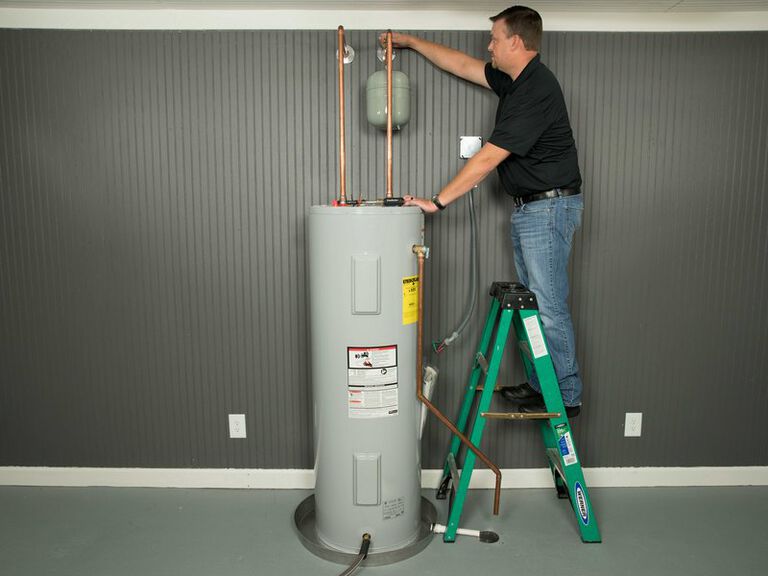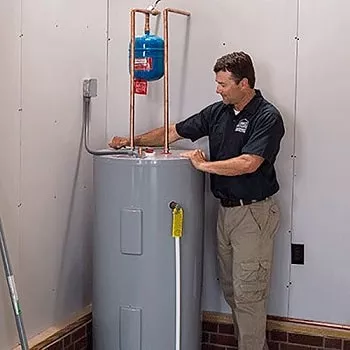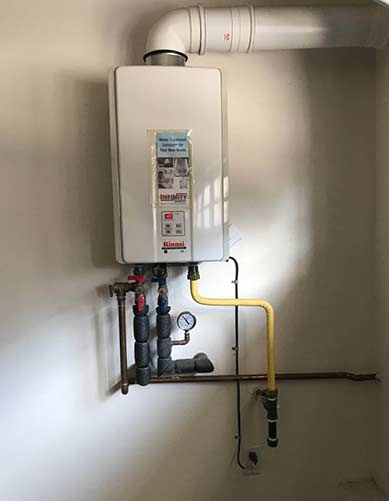Dependable Pipe Repair Solutions to Avoid Expensive Water Damage
Dependable Pipe Repair Solutions to Avoid Expensive Water Damage
Blog Article
Full Guide to Water Heating UnitInstallment and Replacement
Recognizing the details of water heating system setup and replacement is vital for house owners looking for to ensure efficiency and reliability in their hot water supply. From selecting the suitable type and size to performing a seamless setup procedure, a number of aspects should be thought about to stay clear of usual challenges.
Kinds Of Hot Water Heater
When considering hot water heater installment and replacement, it is important to understand the numerous sorts of water heaters readily available in the market. The most typical types consist of storage tank water heaters, tankless hot water heater, heatpump hot water heater, and solar water heaters.
Tank water heating units are typical systems that store a certain quantity of hot water, making them easily offered when needed. In contrast, tankless water heating units give hot water on demand, removing the need for storage.
Heatpump hot water heater use power to move heat from the air or ground to warm water, using substantial energy cost savings however calling for even more room and specific setup conditions. Finally, solar water heating systems harness solar power to heat water, providing an eco-friendly option with potential long-lasting expense savings, although they commonly call for a back-up system for over cast days.
Comprehending these options makes sure educated choices relating to setup and substitute, accommodating details demands and preferences.
Choosing the Right Dimension
Picking the appropriate size for a hot water heater is crucial to guarantee ideal performance and efficiency. A device that is as well small will struggle to meet house demands, leading to inconsistent warm water schedule and raised power intake. Conversely, an extra-large water heater can lead to unnecessary power waste and higher energy costs.
To determine the right size, think about the household's height hot water usage. This can be calculated based on the variety of residents and their normal hot water requirements. A household of four might call for a water heater with a capacity of 50 to 80 gallons, depending on the use patterns, such as synchronised showers and laundry.
Furthermore, analyze the recovery rate, which measures just how quickly a heating unit can restore warm water after it has been made use of. For tankless designs, emphasis on the circulation rate, measured in gallons per minute (GPM), to guarantee it fulfills the house's simultaneous demand.

Installation Process Overview

Next, the old system should be separated and eliminated, making sure to adhere to local codes and guidelines relating to disposal. Once the old device is out, the new water heating system can be positioned in place. This action involves linking the water supply lines, making this article certain that all fittings are safe and secure and leak-free.
After developing water connections, it's necessary to link the power supply, whether electrical or gas, adhering to the maker's guidelines carefully. As soon as all connections are made, the system must be loaded with water, and the power can be transformed back on. Ultimately, it is very important to look for leakages and guarantee the water heating system is functioning properly prior to completing the setup procedure.
Common Installation Errors

Another constant blunder is ignoring to comply with regional codes and regulations. Falling short to comply with these criteria can not just cause safety and security threats but might additionally result in costly fines or the need for costly reinstallation. Furthermore, improper airing vent is a vital issue. Inadequate air flow can create hazardous gas accumulation, positioning serious health risks.
Stopping working to secure connections or making use of the incorrect type of fittings can lead to leakages and water damages. By avoiding these common installment blunders, home owners can guarantee their water heating unit runs safely and successfully, optimizing performance and long life.
Upkeep Tips for Durability
Proper maintenance of a hot water heater is crucial for its durability and ideal efficiency. Regular inspections and maintenance can prevent expensive fixings and prolong the appliance's lifespan. Begin by examining the temperature setup; it should normally be established between 120 ° F and 140 ° F for ideal power effectiveness and safety and security.
Every six months, purge the storage tank to get rid of sediment build-up, which can hinder heating effectiveness and cause deterioration. To do this, turn off the heater, attach a pipe to the drainpipe valve, and allow the my latest blog post water run until it is clear.
When they are corroded,Anode rods need to be examined annually and replaced. These rods assist protect against tank rust by drawing in harsh elements in the water.
Additionally, inspect the pressure relief valve regularly to ensure it is working properly. This shutoff is vital for protecting against excessive pressure accumulation within the container.
Last but not least, think about arranging a professional maintenance check every few years for detailed examinations and servicing. By adhering to these maintenance suggestions, homeowners can considerably improve the effectiveness, security, and life expectancy of their water heating units, making sure trusted warm water for several years ahead.
Verdict
To conclude, correct installment and upkeep of hot water heater are essential for making certain performance and longevity (drain cleaning). Picking the ideal kind and size, adhering to setup guidelines, and preventing typical mistakes dramatically add to optimum performance. Normal upkeep checks and professional maintenance assistance receive capability and avoid costly fixings. By recognizing these important facets, house owners can achieve a trustworthy warm water supply while minimizing possible issues connected to water heating system procedure.
Comprehending the intricacies of water heating unit installment and replacement is important for home owners seeking to make sure efficiency and dependability in their hot water supply.Container water heaters are conventional systems click resources that store a specific volume of warm water, making them conveniently available when needed. In contrast, tankless water heaters give warm water on demand, getting rid of the requirement for storage. Choosing a water heating unit that is either also small or too large can lead to ineffectiveness, resulting in poor warm water supply or excessive energy usage.
By comprehending these essential aspects, property owners can attain a trusted hot water supply while minimizing prospective problems connected to water heating unit procedure. pipe repair.
Report this page